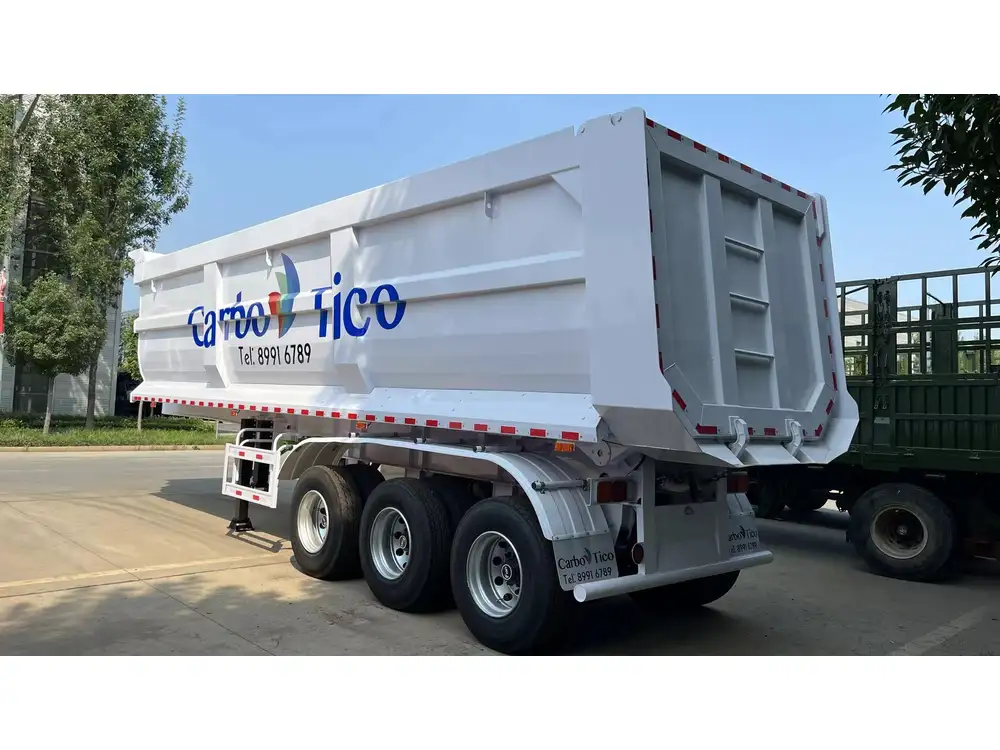Transporting goods efficiently requires not only the right equipment but also a robust knowledge of securing loads effectively on flatbed trailers. Proper load security ensures safe transportation, compliance with regulations, and protects your investment. This guide will delve deep into effective methods, techniques, and best practices for securing loads on flatbed trailers, ensuring your cargo reaches its destination unscathed.
Understanding Flatbed Trailers
Before we discuss load securing techniques, it’s essential to understand the different types of flatbed trailers available for use and their unique features.
Types of Flatbed Trailers
| Type of Trailer | Description | Use Cases |
|---|---|---|
| Standard Flatbed | A flat, open trailer with no sides/roof | Versatile cargo, construction materials |
| Step Deck | Offers a lower deck height | Hauling tall equipment |
| Double Drop | Two drops to lower the load center | Oversized loads, especially machinery |
| Reefer Flatbed | A flatbed with a refrigeration unit | Perishable goods |

Load Securing Equipment and Tools
Essential Equipment
- Ratchet Straps: These are crucial for securing most loads due to their adjustable tension feature.
- Chain Binders: For heavy shipments, chains and binders offer robust security.
- Edge Protectors: Prevents straps and chains from damaging the cargo.
- Tarps: Used to cover and protect loads from environmental factors.
- Dunnage: Wooden materials used to elevate and stabilize loads.
- Belly Straps: Used to secure taller loads by wrapping around the cargo.
Additional Tools
Utilizing the right tools can simplify load securing.
- Tension Gauges: To measure the tightness of straps, ensuring optimal load security.
- Padded Straps: Prevents damage to goods while offering grip.

Step-by-Step Guide to Securing a Load
Securing a load on a flatbed trailer involves several critical steps, each essential to ensuring safety and compliance with transport regulations.
1. Assess the Load
Analyze Cargo Characteristics
Understanding the nature of your cargo is crucial. Consider aspects such as:
- Weight: Heavier loads require stronger securing methods.
- Shape: Oddly shaped items may need additional support or specialized securing techniques.
- Fragility: Sensitive items may need padding or special ties to prevent damage.

2. Prepare the Flatbed Trailer
Inspect Trailer Condition
Before loading, inspect the trailer for any signs of wear or damage, especially:
- Floor conditions
- Edge rail integrity
- Tie-down points
3. Position the Load

Correct Load Placement
Position your load centrally on the trailer to ensure even weight distribution. Remember:
- Weight Distribution: Ensure heavy items are placed below lighter cargo.
- Avoid Overhang: Ensure that load does not extend beyond the edge of the trailer.
4. Choose the Right Securing Method
Common Techniques
- Direct Tie-Down: Attach straps or chains directly from the load to tie-down points on the trailer. Ideal for standard loads.
- Over-the-Top Load Securement: For tall loads, apply straps over the load, down to the trailer’s side. Useful for covering larger items.
- Lateral Securing: Use horizontal straps for stability on wider loads.

5. Implement Securement Methods
Using Ratchet Straps
- Thread through anchor points.
- Ensure proper tension: To avoid slack, use a tensioning mechanism to secure.
- Cross Straps: Cross them over large items to provide extra stability.
Using Chains and Binders
- Chain around the load and attach it to the trailer’s tie-downs.
- Utilize a ratchet binder to secure the chain tightly, ensuring it doesn’t loosen during transit.

6. Employ Edge Protectors & Dunnage
Preventing Damage
Use edge protectors where straps or chains contact the load. Dunnage stabilizes the load and prevents shifting.
7. Covering Loads

When and Why to Use Tarps
For loads susceptible to weather conditions or road debris:
- Choose appropriate tarps that fit the load dimensions.
- Secure with straps to prevent flapping during transit.
8. Final Inspection
Ensuring Complete Security
Before hitting the road:
- Check for visible movement in the load.
- Re-check tension on securing equipment.
- Conduct a quick walk-around of the trailer to confirm everything is secure.

Regulations & Best Practices for Load Securement
Adhering to DOT Regulations
Familiarize yourself with regulations set by the Department of Transportation (DOT). Key points include:
- Minimum Tie-Down Requirements: At least one tie-down for every 10 feet of length for the load.
- Working Load Limit (WLL): Understand the WLL of your securing equipment to avoid overloading.
Recommended Best Practices
- Training: Provide regular training for drivers and employees on securing loads effectively.
- Documentation: Keep records of load inspections and securing methods.
- Avoid Common Errors: Such as under-tensioning, over-tensioning, or using inadequate securing methods.

Common Hazards and Troubleshooting
Identifying Load Security Hazards
- Shifting Loads: Can lead to accidents; ensure ample securing methods.
- Inadequate Tie-Downs: May lead to load loss; always use DOT-approved equipment.
- Environmental Factors: Wind, rain, and varying terrain can affect load stability.
Troubleshooting Tips
If you notice issues during transit, consider these solutions:
- Re-tightening straps at rest stops.
- Adjusting loads that may have shifted due to terrain.
- Replacing any damaged gear immediately at the next stop.

Conclusion: Perfect Your Load Securement Techniques
By mastering the methods of securing loads on flatbed trailers, you not only comply with federal safety regulations but also protect your cargo and enhance your operational efficiency. Trust in multiple methods to adapt to various loads, inspect your equipment regularly, and stay informed about industry standards.
With the application of the practices outlined in this comprehensive guide, you’re now well-equipped to secure loads effectively, ensuring safe transport and contributing to a more secure supply chain.
Additional Resources
For further information, consider checking:
- FMCSA Guidelines and Regulations: For detailed regulations concerning load securement.
- Load Securement Training Programs: Enroll your team in specialized training sessions.
With diligence and attention to detail, we can ensure every load is secured to perfection.



